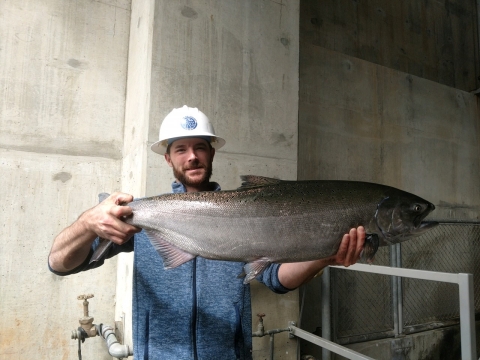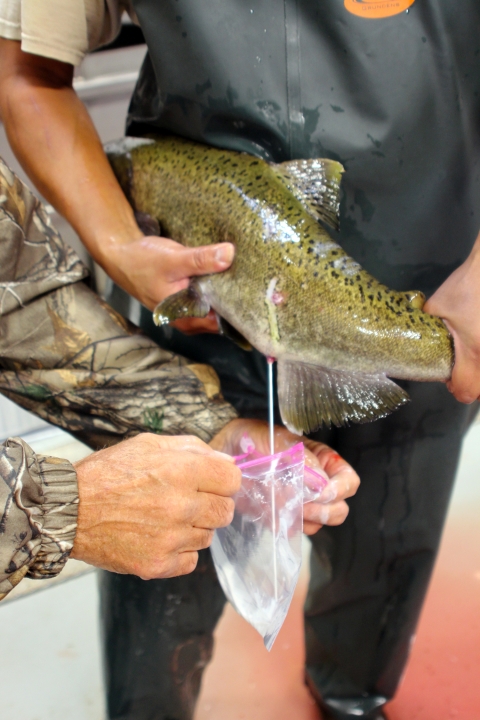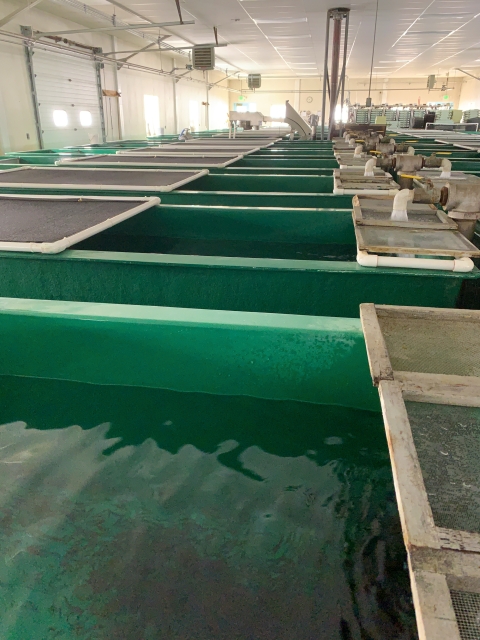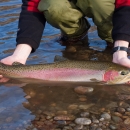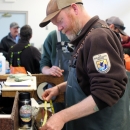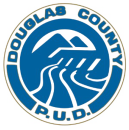Our hatchery was built to compensate for lost natural fish production caused by the construction of the Grand Coulee Dam. The population of spring Chinook native to our mid-Columbia River is listed under the Endangered Species Act, partially due to dam construction. We aim to supplement the population so that there are some fish available for harvest. Douglas County Public Utility District’s Methow Fish Hatchery is one of our partners in this effort. Project video
Winthrop and Methow fish hatcheries use something called a stepping-stone conservation model in their production of Chinook salmon. Both hatcheries operate their fish ladders, which primarily collect hatchery-origin returning adults. Methow Fish Hatchery also collects natural origin, or wild, Chinook at Wells Dam, the first dam downstream of the Methow River. Methow Fish Hatchery predominantly relies on these wild Chinook as their broodstock broodstock
The reproductively mature adults in a population that breed (or spawn) and produce more individuals (offspring or progeny).
Learn more about broodstock ; so the Chinook raised there are only one generation removed from the wild population.
Winthrop primarily uses Methow Fish Hatchery returning adults as their broodstock. This means that Chinook raised at Winthrop are only two generations removed from the wild population. This model helps preserve natural origin genetics and characteristics in the overall population. This is particularly important as hatchery origin adults from Methow Fish Hatchery are specifically intended to supplement natural spawning in the river, and hatchery origin adults from Winthrop are intended to support fisheries as well as function as a safety-net to natural spawning in years when total adult returns are poor.
While many spring Chinook from Winthrop NFH are caught in commercial, recreational, and tribal fisheries in the ocean and Columbia River, many also make it back to the Methow River and ultimately to the hatchery ladder. Most of these are donated to Native American tribes for ceremonial and subsistence purposes. One of our responsibilities is to provide salmon to tribes to make up for the loss of one of their vital, traditional food sources caused by the construction of the Grand Coulee Dam. We also work directly with the Confederated Tribes of the Colville Reservation each year by providing them with Chinook eggs for their reintroduction program in the Okanogan River.
Spring Chinook are spawned in late August and early September. Testing for pathogens is done on females, as they can pass disease to their eggs. Any eggs at high risk for disease can be culled later if needed, as the eggs from each female are placed into separate incubation trays in the nursery. The water is chilled to control how quickly the eggs develop.
At the end of February, young fry are moved into indoor tanks. We wait to feed them until all the yolk in their yolk-sacs has been absorbed. At the end of March, we move them outside.
In July, their adipose fins are clipped to allow retention in selective sport fisheries; and they receive tiny coded-wire tags in their snouts to allow us to track things like straying and survival rates, as well as how many are captured in different mixed fisheries. At this time, they are moved into new raceways where they have more room. Keeping the density of fish in each raceway low and using plenty of water flow keeps the fish healthy. They spend the winter outside and are released in April about a year after hatching.
Spring Chinook typically migrate out to the ocean rapidly. From our hatchery, they have to pass nine dams. 90% of the fish are past Wells Dam in just 10 days. Coho and steelhead are slower in moving downriver.
Our salmon are faithful in returning to the Methow River. Of the returning adults, more than 90% return directly up the fish ladders at Methow and Winthrop hatcheries, which are only about a mile apart. We continue to hone our methods to ensure that wild-origin fish dominate the Methow population, and that natural spawning populations remain robust to increase the availability of Chinook for harvest and to provide food fish to tribes.

